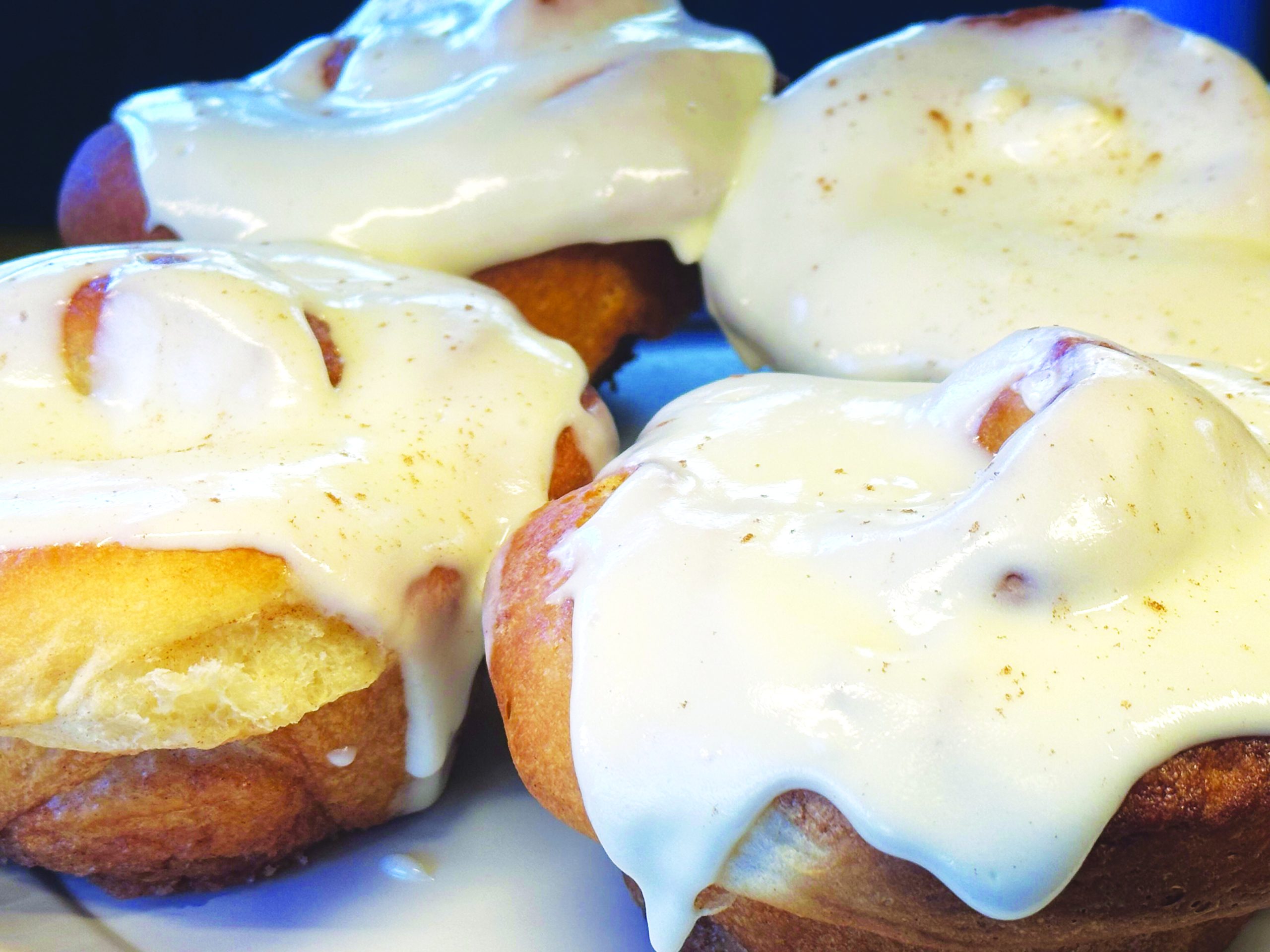
It’s not unusual to start your day with a coffee and end it with a beer. I do it all the time. They are by far my two favorite beverages, not to mention industries. Both are full of passionate people who care about a well-crafted product and really dig into the nuances of their ware.
“Not all coffee is created equal,” Matt Sandy, marketing manager at Great Divide Brewing Company, says. “Just like you wouldn’t use subpar hops, barley or yeast, don’t skimp on the coffee you select.”
Great Divide is no stranger to coffee beer — the brewery does a formal collaboration with another longtime Denver institution, Pablo’s Coffee, when brewing its Coffee Porter. For this beer, Great Divide takes whiskey barrels that previously held its Yeti Imperial Stout and transports them to Pablo’s, where they’re filled with green coffee beans that are then aged. Once the green coffee reaches the desired flavor profile, the beans are roasted, ground and sent back to the brewery. Great Divide’s brewers then make a massive batch of cold brew with the ground coffee and add it to the porter on the cold side.

I recently homebrewed my first coffee beer and opted for a frequently used coffee-infused style: stout. Though you often find porters and stouts as the leading contenders for additional coffee flavor, the options are endless. I’ve imbibed delicious coffee blondes, browns, dubbels, saisons and more. The key is selecting your beer style and then selecting a complimentary coffee.
Kurt Hans, founder and CEO of Ampersand Coffee in Boulder, has done several collaborations with local breweries including Asher Brewing, Beyond the Mountain Brewing, Finkel & Garf, Uhl’s Brewing and Very Nice Brewing Company. Hans is so passionate about coffee that he remembers exactly where he was when he had his first cup (a small roadside cafe called The Coffee Cup Cafe in rural Minnesota when he was 10 years old with his mother, grandmother and great-grandmother.)

“There are several factors to think about, including how the coffee is introduced to the beer — will it be infused as ground or whole bean — or will it be added as a cold brew coffee syrup concentrate?” Hans says. “Once the process is determined, you need to think about what the beer is like without the coffee, and you want to select a coffee that will complement the otherwise occurring flavors and attributes in the beer.”
For my homebrew (Damn Fine Coffee Stout), I added whole bean coffee as a cold addition. I used a medium roast that had dark chocolate, raisin and floral notes. This complemented the caramel, black and chocolate malts used in the recipe, and neither the malt nor the coffee overpowered the other. If I’ve learned anything, it’s that the options for crafting a coffee beer are endless, and I can’t wait to change the style, try a different coffee, and experiment with when and how I add it. This coffee homebrew adventure is just beginning.
Coffee cupping

One of the most exciting parts of brewing a coffee beer is selecting which coffee to use. Just like beer, coffee is an incredibly complex beverage containing a multitude of subtle characteristics. There are a lot of parallels between evaluating beer and coffee, which makes it fun. One way the experts evaluate coffee is through a process called cupping.
During cupping, they “evaluate and score coffee up to 100 points on fragrance, aroma, flavor, aftertaste, acidity, body, balance, sweetness, uniformity, taints/defects and overall impression,” Hans, of Ampersand Coffee, explains.
Hans’ advice for those interested in cupping at home?

“Have fun with it and don’t expect to be good at it right away,” he says. “Focus on one or two attributes and try to really describe those attributes well as you enjoy your daily coffee for a period of time. Once you have those down, start focusing on other attributes. Another thing I like to say is that when you are evaluating coffee flavor, almost all coffees have some type of chocolate note in them. So when thinking about flavor and trying to figure out a complex flavor, start with what type of chocolate you taste — milk, dark, baker’s, etc. — and then focus on what else you are tasting. Often when you identify one flavor you are tasting, the others become more apparent because you can focus further on those other flavors.”
Ampersand also offers public coffee cuppings. For more information, visit ampersand-coffee.com.



